Pillar Five
Artwork by A. Manivelu
Top
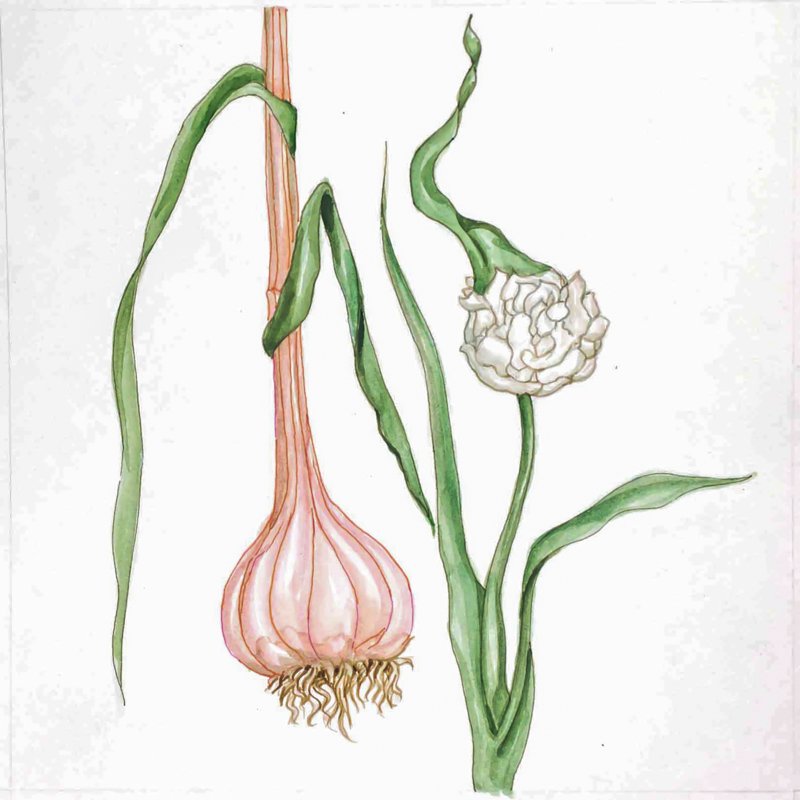
NORTH FACE:
GarlicA species in the onion genus, Allium. Its close relatives include the onion, shallot, leek, chive, and Chinese onion. Garlic is native to Central Asia, and has long been a common seasoning worldwide, with a history of several thousand years of human consumption and use.
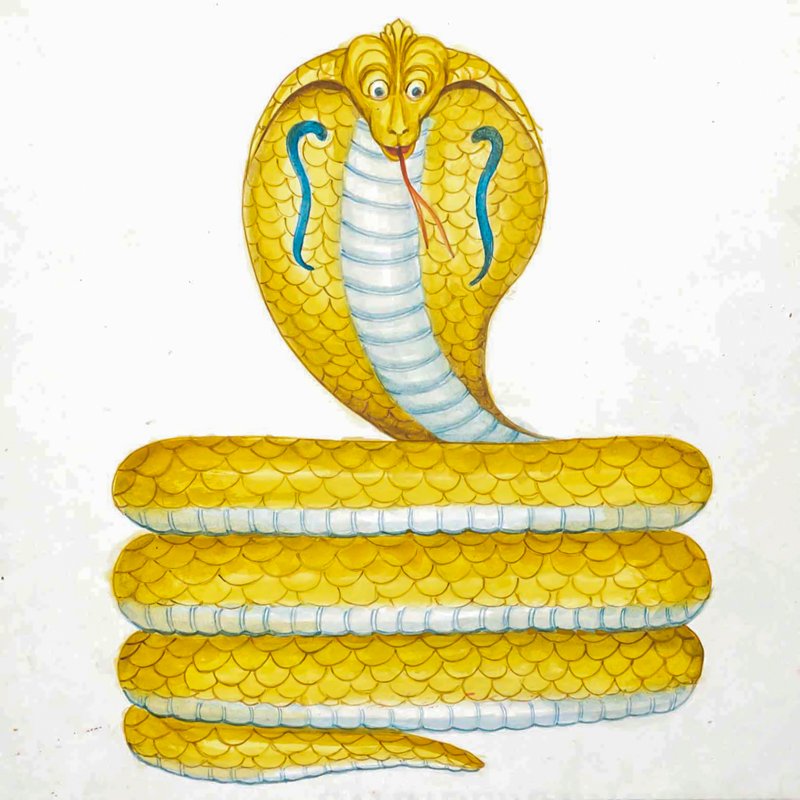
EAST FACE:
NagaHere we see the coiled serpent or naga. Often a cobra, it is a symbol of the kundalini coiled on the four petals of the muladhara chakra. Nagas are also set in shrines in a village where they become guardians to keep negativity from entering.

SOUTH FACE:
Siva AghoraAghora is one of the five faces of Sadasiva. It means “nonterrifying.” It is an aspect of Siva which, like Rudra, personifies of His power of dissolution or reabsorption. Ghora means “terrific, frightful, terrible,” etc. This is a form of God Siva as Destroyer. One of the five faces of Panchabrahma (Sadasiva).

WEST FACE:
TurmericThis is turmeric (Curcuma longa), a plant of India from the ginger family whose powdered rhizome is a prized seasoning and yellow dye. It has rich ayurvedic properties, is used in holy ritual, and serves also to make kunkuma, the red powder used in forehead markings.
1 of 4
Middle
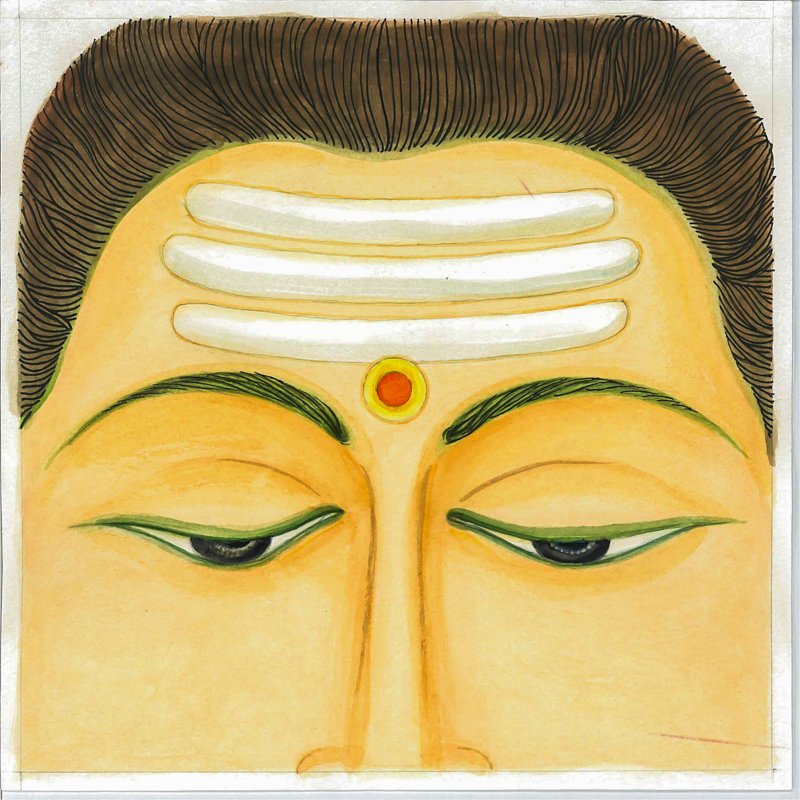
NORTH FACE:
Forehead symbol of a Saivite HinduThis is the forehead symbol of a Saivite Hindu, with three stripes of holy ash and a red dot between the brows. Saivism is the religion followed by those who worship Siva as supreme God. Oldest of the four sects of Hinduism. In the Ramayana, dated astronomically at 2000 BCE, Lord Rama worshiped Siva, as did his rival Ravana. Buddha in 624 BCE was born into a Saivite family, and records of his time speak of the Saiva ascetics who wandered the hills looking much as they do today.
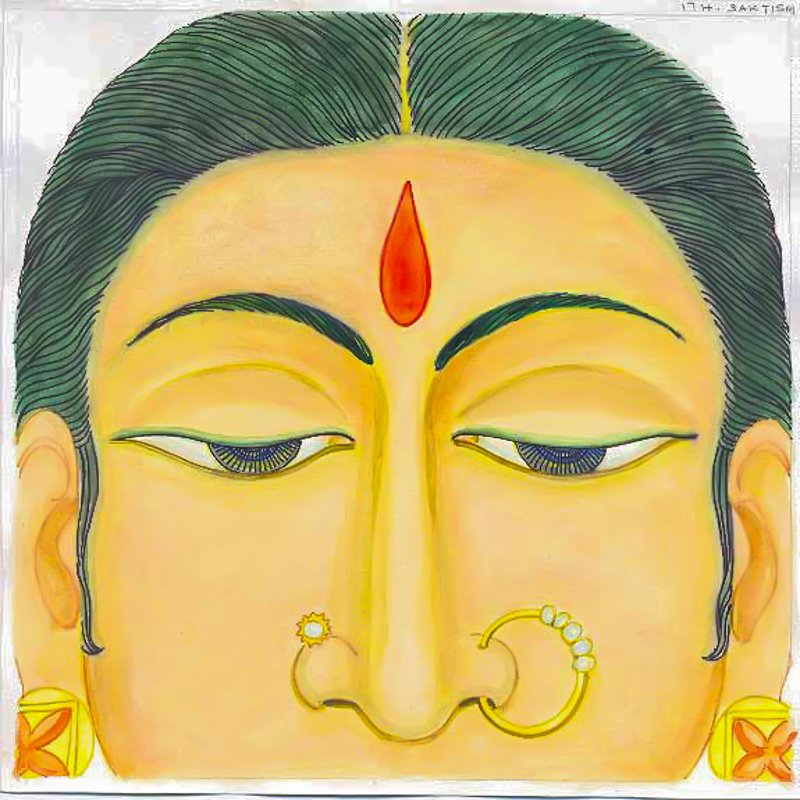
EAST FACE:
Forehead symbol of a Shakta HinduA flame-like red dot between the brow. Saktism is the “doctrine of power,” the religion followed by those who worship the Supreme as the Divine Mother—Shakti or Devi—in Her many forms, both gentle and fierce.

SOUTH FACE:
Forehead symbol of a Vaishnavite HinduThis is the tilaka or forehead insignia of the Vaishnavites, with a U-shaped line of holy ash and a red vertical line made of kumkum. Vaishnavism is one of the four major religions or denominations of Hinduism, representing roughly half of the world’s one billion Hindus. It gravitates around the worship of Lord Vishnu as Personal God, His incarnations and their consorts.

WEST FACE:
Forehead symbol of a Smarta HinduThis shows the sectarian markings of the Smarta Hindus, a simple red dot between the brows. This sect is based on the secondary scriptures (smriti). It is the most liberal of the four major Hindu denominations, an ancient Vedic brahminical tradition (ca 700 BCE) which from the 9th century onward was guided and deeply influenced by the Advaita Vedanta teachings of the reformist Adi Sankara.
1 of 4
Bottom
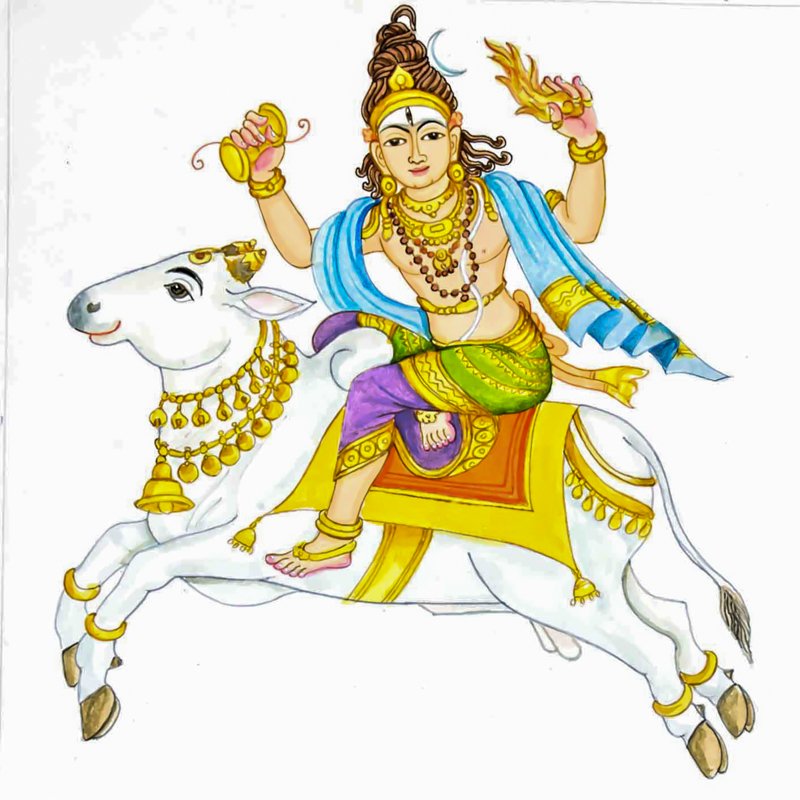
NORTH FACE:
PasupatiHere is the form of Siva known as Pasupati, “herdsman or lord of animals.” He is riding on Nandi the bull. This name and attribute of Siva first appears in the Atharva Veda. Siva, seated in yogic pose, was found on a seal from the 6,000-year-old Indus Valley civilization.
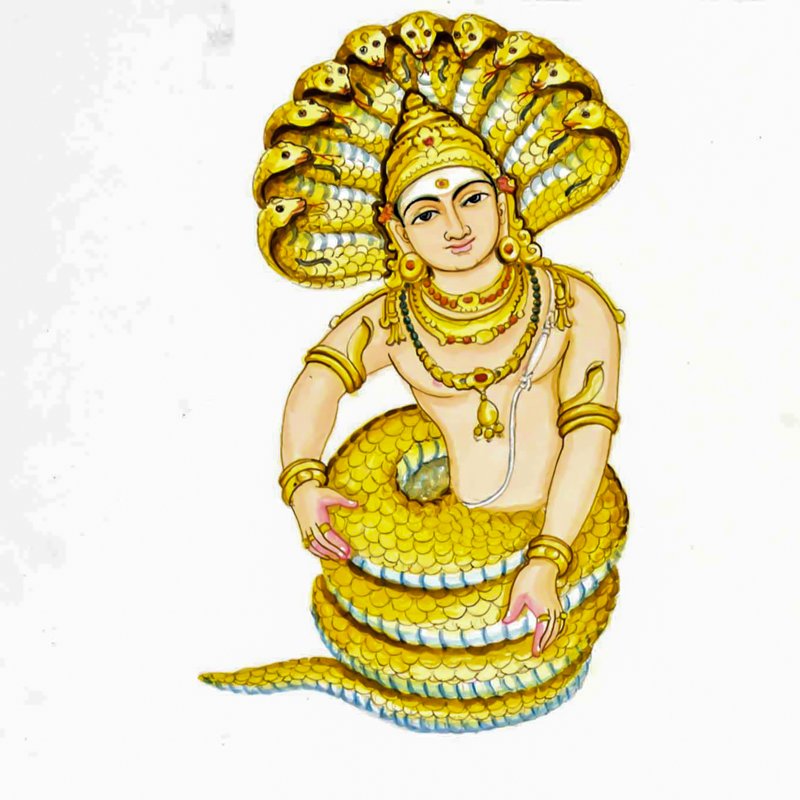
EAST FACE:
NagarajaThis is the form of God Siva as Nagaraja, “Lord of the nagas.” Siva here transcends all categories. He is existence, with all its paradoxes, and beyond existence. He is the indefinable Absolute. Here Siva is surrounded with snakes all around his body, ashes smeared on his forehead, long locks of hair, etc. No other Indian God is as intimately connected and profusely associated with serpents as is Siva. A cobra coils around His neck, with its hood forming a protective canopy over His head. The beauty of the image is pristine in every feature: the relief of the five-layered snake and the way it lies around and above Siva’s compassionate face.
1 of 2
